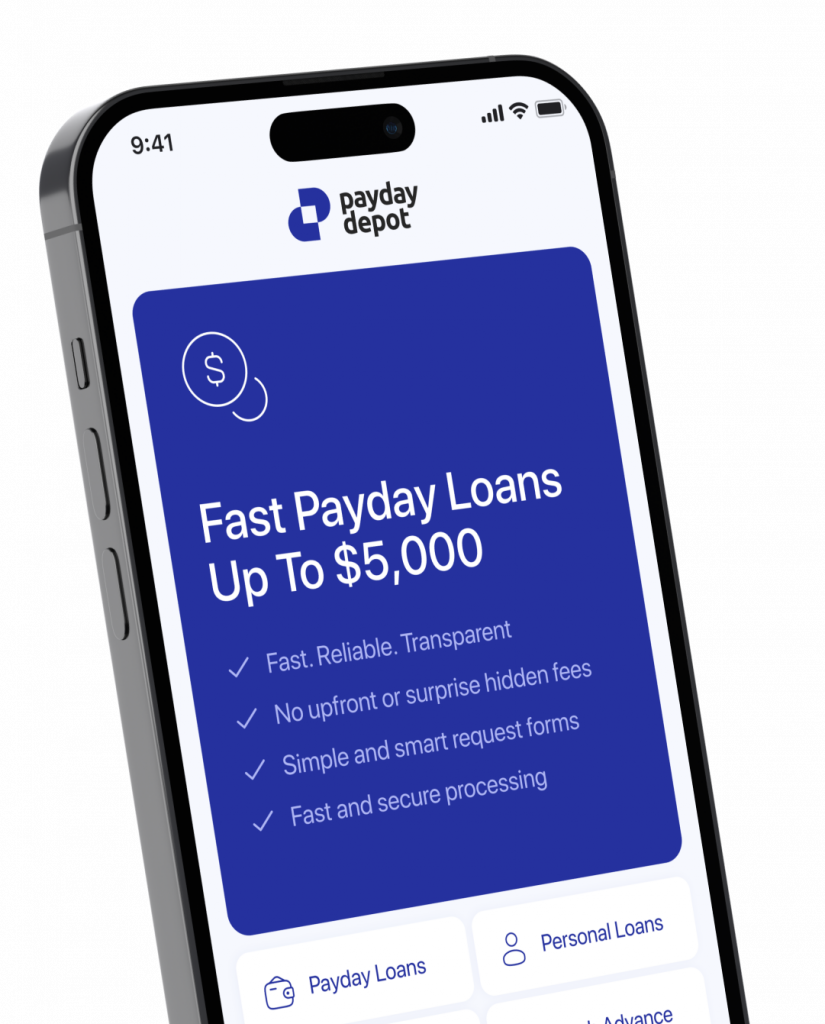Jacqueline DeMarco is a freelance writer/editor passionate about finance. She holds a degree in literary journalism and digital art from UC Irvine. With 8+ years of writing experience, she collaborates with various publications and brands. Currently, Jacqueline offers digital marketing services and consults on branding/marketing projects. Read more
Tribal Loans, Easy For Bad Credit
Tribal loans offer borrowers access to funds during a time of need without the hassles of tedious paperwork and strict eligibility criteria. Tribal loans are a type of loan that you can access either through Native American tribes or select lenders affiliated with a Native American tribe.
Tribal loans tend to be more easier to acquire compared to more traditional forms of borrowing such as personal loans through a bank or credit union.
Keep reading to learn more about what tribal loans are, what benefits they offer, and how to apply for one.
Overview of Tribal Loans
Tribal loans are a type of lending service offered by Native American tribes or qualified lenders who are affiliated with these tribes. These loans are often reported to be more accessible, flexible, and affordable compared to traditional loans offered by banks and other financial institutions.
One of the main advantages of tribal loans is that they are not subject to state law limitations on interest rates and other lending requirements. Instead, tribal lenders are subject to federal regulations established by the Native American Financial Services Association (NAFSA) and other governing bodies. This means that tribal loans may offer higher borrowing limits and lower interest rates than other lending options (although they are generally higher than traditional lending products), making them a great choice for people who may not qualify for bank loans or want an alternative to payday loans.
To qualify for a tribal loan, you typically have to provide proof of income and employment, as well as a valid ID and proof of residency. Lenders will also review your credit history and other financial information to determine your eligibility for a loan and the terms of the loan.
It’s important to note that, like all loans, tribal loans come with certain risks and downsides. For example, some lenders may charge hidden fees or use aggressive collection tactics if you are unable to make your payments. Additionally, some tribal lenders may not be legitimate and could engage in fraudulent activities, which is why it’s important to research any lender thoroughly before working with them.
What are the Eligibility Requirements for a Tribal Loan?
The eligibility requirements for a tribal loan may vary depending on the lending institution that is offering the loan. However, there are some general criteria that most tribal lenders will consider when reviewing a loan application.
Firstly, tribal lenders will typically require that the borrower be at least 18 years old and a legal resident of the United States. In addition, the borrower will need to provide proof of income, such as pay stubs or bank statements. The lender may also consider the borrower’s employment history and credit score, although these factors may not be as heavily weighted as they would be for a traditional loan. This can make tribal loans an appealing option for consumers with bad credit scores.
A borrower’s ability to repay the loan is another important factor that tribal lenders will consider during the application process. This evaluation considers not only the borrower’s current income and employment status but also their overall financial situation. For example, a borrower’s existing debt or other financial obligations may impact their ability to repay the loan.
Ultimately, eligibility requirements for a tribal loan will depend on the lending institution, as well as the specific loan product being offered. However, borrowers should generally expect to provide proof of income and meet other basic requirements related to age and residency.
How to Apply for a Tribal Loan
Applying for a tribal loan typically is a straightforward process that can be done online or in person, depending on the lending institution.
While all lenders have their own unique application process, these are the general steps involved in applying for a tribal loan:
- Research tribal lending institutions: Before applying with any lenders, do your research to identify reputable tribal lending institutions that offer the types of loans that you are interested in pursuing.
- Gather your documents: Before you begin the application process, gather all of the documents that you will need to provide, such as proof of income and identification. Getting organized ahead of time can help streamline the application process and keep things moving.
- Submit your application: Once you select a tribal lender and gather your documents, submit your loan application either online or in person. It’s best to apply with a handful of different lenders so that you can compare offer rates and loan terms.
- Review your loan terms: After your loan application has been submitted, you will receive a loan offer that outlines the terms and conditions of the loan. Take the time to review these carefully to ensure that they are favorable and meet your financial needs.
- Accept the loan offer: If you are satisfied with the loan offer, accept it and provide any additional information or documentation that is required to finalize the loan.
- Receive your funds: Once your loan has been approved and finalized, the funds will be deposited into your bank account.
Understanding the Terms and Conditions of a Tribal Loan
Like any other loan product, it is important to carefully review the terms and conditions of a tribal loan before signing on the dotted line. Some key terms that you should be aware of when considering a tribal loan include:
- Interest rate: The interest rate on a tribal loan can vary depending on the lending institution and the specific loan product being offered. It is important to ensure that you understand the interest rate and how it will impact your overall loan costs. The higher the interest rate is, the more you’ll pay. You want to look for the lowest interest rate available to you.
- Repayment terms: Tribal loans may offer more flexible repayment terms than traditional loans, but it is still important to understand the repayment schedule and any penalties or fees associated with late payments or default.
- Loan amount: The maximum loan amount that is available through a tribal lender may vary depending on the lending institution and the specific loan product being offered.
- Fees: In addition to interest, tribal lenders may charge origination fees or other fees that can impact the overall cost of the loan.
The Benefits of Taking Out a Tribal Loan
If you’re in need of cash and considering a tribal loan, you may be wondering what benefits it can offer. Here are some key advantages to keep in mind:
- Access to funds: Tribal loans can provide fast access to cash when you need it most. Unlike traditional loans that can take weeks to process, tribal lenders often offer same-day or next-day funding.
- Flexibility: Tribal loans can be used for a variety of purposes including unexpected expenses, medical bills, or home repairs. You can typically borrow larger amounts of money via tribal loans than you can with payday loans, and repayment terms may be more flexible.
- No credit check: Many tribal lenders don’t require a credit check, which can make them a good option if you have poor or no credit. Instead, they may look at your income and employment history when determining your eligibility for a loan.
- Tribal sovereignty: Tribal lenders are governed by tribal law, which can offer certain protections and advantages over traditional lenders. For example, tribal lenders may be exempt from certain state regulations or interest rate limits.
- Community impact: When you take out a tribal loan, you’re supporting Native American tribes and the communities they serve. Many tribal lenders reinvest a portion of their profits into social programs and economic development initiatives.
As with any form of borrowing, tribal loans come with some risks and drawbacks to consider. It’s important to research your options carefully and choose a reputable lender with transparent terms and reasonable fees. With that said, a tribal loan can be a helpful tool to get you back on your feet if you’re in a tight spot and need money quickly.
The Takeaway
Tribal loans can be a great option for those looking to access funds in times of need without the stress of a traditional loan. While similar to other forms of credit, they have different eligibility requirements and certain restrictions to consider. It’s important to know exactly what you are getting into before taking out a tribal loan and understand all the details of the agreement as well as how much it will cost you.
Even though tribal loans offer advantages such as less strict eligibility requirements and speedy access to funds, they come with potential risks such as high-interest rates and fees. Be sure to ask any questions you may have about your specific tribal loan before signing on the dotted line so that you can feel confident in your decision.
Understanding tribal loans thoroughly could potentially help you make an informed choice on the best financial solution for your needs.
FAQ
Do Tribal Loans Come With Fees?
Tribal loans usually come with a variety of fees. Common tribal loan fees include origination fees, late payment fees, prepayment penalties, and insufficient fund fees.
What Can You Use a Tribal Loan For?
Tribal loans can be used for a variety of purposes such as covering unexpected expenses, consolidating high-interest debt, starting a small business, paying medical bills, covering car repairs, or making a large purchase. Many tribal loans are considered installment loans, which means you can borrow a lump sum and repay it over a set period of time with fixed payments.
Where Can I Find a Tribal Loan Lender?
The Native American Financial Services Association (NAFSA) is a trade association representing tribal lenders with a directory of member lenders on their website. It may also be helpful to reach out to your local Native American community organizations or financial institutions for recommendations.
How Do You Repay a Tribal Loan?
A tribal lender will provide a repayment plan outlining the amount you borrowed, the interest rate, and the length of the loan. You can then make payments either online, through automatic bank transfers, or by mailing in a check.
What Should You Look for in a Tribal Loan Lender?
When looking for a tribal loan lender, first check if they are licensed and operate in accordance with all state and federal lending laws. You’ll also want a lender with transparent and fair lending practices and a track record of positive reviews. Finally, compare interest rates and fees from different lenders to ensure you get the best deal possible.



